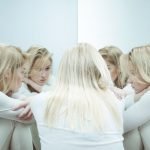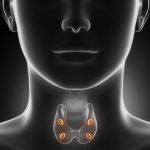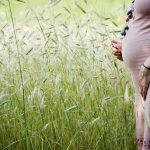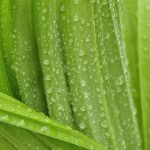WNF – Global Naturopathic Regulation
Naturopathic News
Iva Lloyd, ND, RPP
 Naturopathy is practiced in every world region, spanning over 80 countries. Regulation of the naturopathic profession currently exists Africa, Asia (India), Europe, Latin America, and in jurisdictions in North America. To be a full member of the World Naturopathic Federation (WNF), associations must support and be working toward regulation. They must also support educational accreditation and high educational standards. (See Tables 1 & 2 for detailed summaries.)
Naturopathy is practiced in every world region, spanning over 80 countries. Regulation of the naturopathic profession currently exists Africa, Asia (India), Europe, Latin America, and in jurisdictions in North America. To be a full member of the World Naturopathic Federation (WNF), associations must support and be working toward regulation. They must also support educational accreditation and high educational standards. (See Tables 1 & 2 for detailed summaries.)
Regulatory Process
The regulation of naturopathy, like all professionals, is strongly correlated with educational standards and is influenced by the political landscape in each country as well as the regulation of other traditional and complementary systems of medicine within the region. Every country or region that has regulation is supported by a professional naturopathic association. For those countries/regions that do not yet have regulation, the WNF encourages those professional naturopathic associations to engage in self-governance activities that protect the public as they work towards regulation.
Overview of Global Naturopathic Regulation
The regulation of naturopathic practitioners is diverse. It covers Naturopathic Technicians, Licensed Naturopaths, Diploma in Naturopathy, and Naturopathic Doctors. Naturopathic practitioners in Europe are referred to as Heilpraktiker or Naturopaths. In North America and India, naturopathic practitioners are regulated as Naturopathic Doctors. In Latin America, regulation exists for both Naturopathic Technicians and Doctors of Naturopathy. This difference reflects educational differences; however, the foundational philosophy and principles are the same. Below is a summary of the current global regulation.
Africa
Naturopathy is practiced in over 11 countries in Africa. Of those, 2 have regulation. The practice of naturopathy in the Democratic Republic of Congo falls under the Decree of 1952, which regulates the practice of medicine and grants exemplary status for traditional medicine practitioners, including naturopaths. In South Africa, naturopathy has been regulated since 1982, under the Allied Health Professions Act. The professions included in this regulation include: Ayurveda, Chinese Medicine and Acupuncture, Chiropractic, Homeopathy, Naturopathy, Osteopathy, Phytotherapy, Therapeutic Aromatherapy, Therapeutic Massage Therapy, Therapeutic Reflexology, and Unani-Tibb. Regulation of naturopathy requires 3 years of basic medical sciences along with a 2-year specialization in Naturopathy from the University of the Western Cape.
- DR Congo: http://apps.who.int/medicinedocs/en/d/Jh2943e/4.13.html
- South Africa regulation: http://ahpcsa.co.za/
Asia
In India, regulation falls under the Ministry of AYUSH. This Ministry is responsible for regulation and promotion of Ayurveda, Yoga and Naturopathy, Unani, Siddha, and Homeopathy. The Ministry of AYUSH sets the guidelines for the regulation of naturopathic practitioners and the accreditation standards for naturopathic educational institutions. There are 7 states in India that currently have regulation for naturopathy, and 19 schools that have been regulated by AYUSH. India’s model of intra-professional collaboration between the different systems of traditional medicine within its country is a model worth noting. In other areas of Asia that practice naturopathy, such as Nepal, there is currently no regulation.
- Ministry of AYUSH: ayush.gov.in
- National Institute of Naturopathy: http://punenin.org/
- Central Council for Research in Yoga and Naturopathy (CCRYN): http://www.ccryn.org/
Eastern Mediterranean
Naturopathy is fairly new to the Eastern Mediterranean, yet there are currently 7 countries that have naturopathic practitioners. There are no naturopathic regulations in the Eastern Mediterranean.
Europe
In Europe there are more than 30 countries that practice naturopathy, of which only 3 currently have regulation. A couple of regulatory challenges persist in Europe. The first is that some countries include the treatments common to Traditional & Complementary Medicine (T&CM) but which are under the regulation of medical doctors. This limits and in some cases restricts naturopathic practitioners and other T&CM practitioners from practicing in their country. The second challenge is that some countries, such as Hungary, have chosen to regulate modalities (specific treatments), as opposed to the regulation of systems of medicine. The WNF discourages this practice, as it decreases the attention and protection of the fundamental principles that are part of every system of T&CM.
- Germany: Naturopathic practitioners in Germany are regulated as Heilpraktiker, and have been regulated since 1939; the latest updates occurred December 23, 2017. Regulation is based on passing a state exam.
- Link to regulations in Germany: https://www.gesetze-im-internet.de/heilprg/BJNR002510939.html
- Switzerland:
- Link to regulations in Switzerland: http://www.oda-am.ch/de/beruf/abschluss-titel/
- Press release: https://www.dakomed.ch/app/download/11775466927/20150504_MM_OdA_Dakomed_Naturheilpraktiker_E.pdf?t=1494403283
- Portugal: Naturopathy is regulated under the Non-Conventional Medicine regulations that include Acupuncture, Chiropractic, Osteopathy, Phytotherapy, Naturopathy, Traditional Chinese Medicine, and Homeopathy. These 7 professions are regulated by Laws 45/2003 of 22 August [translation: Law 45, established on August 22, 2003] and Law 71/2013 of 2 September.
Latin America
- Brazil: Recognition of naturopathy is through the Ministry of Health, under Integrative Complementary Medicine.
- Regulations in Brazil: http://www.camara.gov.br/proposicoesWeb/fichadetramitacao?idProposicao=543332
- Chile: Regulation in Chile is based on the passing of a standardized exam. There are 2 different designations: Naturopatas and Holistic Naturopath. A Holistic Naturopath is a practitioner that has completed training in naturopathy, acupuncture, and homeopathy.
- Regulations in Chile: economia.gob.cl
- Puerto Rico: Puerto Rico has been regulated since 1997. It is the only country that has distinct regulation for naturopaths and naturopathic doctors.
- Link to regulation in Puerto Rico: http://www.oslpr.org/download/en/1997/0208.pdf
North America
In both Canada and the United States, naturopathic practitioners are considered primary-care providers and are regulated as naturopathic doctors. Regulation is based on graduating from accredited 4-year naturopathic medical programs and passing an extensive postdoctoral board examination in order to receive a license or registration. NDs must also fulfil mandatory annual continuing-education requirements and they must adhere to a specific scope of practice as defined by their provincial/state regulations.
In Canada, regulation has existed since the 1920s. There are currently 5 provinces that have full regulation and 1 province that has title protection. Three other provinces are in the process of regulation.
In the United States, many States were regulated between the 1920s and 1950s; however, due to sunset laws most lost their regulation. There has been a tremendous regulatory effort in the United States since the 1980s, and currently there are 20 states, the District of Columbia, and the United States territories of Puerto Rico and the United States Virgin Islands that have licensing or registration laws for naturopathic doctors. Regulation is pending in another 6 states.
Canada
- Regulatory College for British Columbia: http://www.cnpbc.bc.ca/
- Regulatory College for Alberta: http://www.cnda.net/
- Saskatchewan regulations: http://www.sanp.ca/sanp-legislation-bylaws-and-policies.html
- Manitoba regulations: http://www.mbnd.ca/about-mna.cfm
- Regulatory College for Ontario: http://www.collegeofnaturopaths.on.ca/
- Nova Scotia regulations: http://nsand.ca/about/nova-scotia-association-of-naturopathic-doctors/
In Canada, the regulatory authorities regulating the practice of naturopathic doctors formed the Canadian Alliance of Naturopathic Regulatory Authorities (CANRA). The aim of the alliance is to foster collaborative and cooperative opportunities to improve the ability of its members to regulate their respective members in the public interest. Details regarding regulatory scope are listed in Table 2.
United States
- Alaska regulations: https://www.commerce.alaska.gov/web/cbpl/ProfessionalLicensing/Naturopathy.aspx
- Regulatory College for Arizona: https://nd.az.gov/
- Regulatory College for California: http://www.naturopathic.ca.gov/
- Regulatory College for Colorado: https://www.colorado.gov/pacific/dora/Naturopathy
- Regulatory College for Connecticut: http://www.portal.ct.gov/DPH/Practitioner-Licensing–Investigations/Naturo/Naturopathic-Physician-Licensing-Requirements
- Regulatory College for the District of Columbia: https://dchealth.dc.gov
- Regulatory College for Hawaii: https://pvl.ehawaii.gov/pvlsearch/
- Regulatory College for Kansas: http://www.ksbha.org/main.shtml
- Maine Regulations: http://mand.org/licensing/
- Regulatory College for Maryland: https://health.maryland.gov/physicians/Pages/home.aspx
- Regulatory College for Massachusetts: https://malegislature.gov/Laws/SessionLaws/Acts/2016/Chapter400
- Regulatory College for Minnesota: https://www.revisor.mn.gov/statutes/?id=147E&view=chapter
- Regulatory College for Montana: http://boards.bsd.dli.mt.gov/ahc#8
- Regulatory College for New Hampshire: https://www.oplc.nh.gov/naturopathic-examiners/laws-rules.htm
- Regulatory College for North Dakota: http://www.ndbihc.org/
- Regulatory College for Oregon: http://www.oregon.gov/OBNM/Pages/index.aspx
- Regulatory College for Pennsylvania: https://legiscan.com/PA/text/HB516/2015
- Regulatory College for Puerto Rico: http://www.oslpr.org/download/en/1997/0208.pdf
- Regulatory College for Rhode Island: http://webserver.rilin.state.ri.us/BillText/BillText17/HouseText17/H5474A.pdf
- Regulatory College for the US Virgin Islands:
- Regulatory College for Utah: https://dopl.utah.gov/licensing/naturopathy.html
- Regulatory College for Vermont: https://legislature.vermont.gov/statutes/fullchapter/26/081
- Regulatory College for Washington: https://www.doh.wa.gov/LicensesPermitsandCertificates/ProfessionsNewReneworUpdate/NaturopathicPhysician
In the United States there is also a Federation of Naturopathic Medical Regulatory Authorities (FNMRA), which coordinate the efforts of all the regulatory bodies: https://fnmra.org/
Western Pacific
There are at least 8 countries in the Western Pacific where naturopathy is practiced. Although there are no formal regulations, there are also no restrictions to practice in Australia and New Zealand – the 2 countries in the Western Pacific that have been practicing naturopathy since the early 1900s. Naturopathy in Australia and New Zealand is covered by private insurance.
In Australia, in lieu of statutory regulations, an independent self-regulatory body – which mirrors the standards of government regulations – has been established. The naturopathic organizations are also active in self-governance, as demonstrated by the standards of practice outlined on the ARONAH website: http://www.aronah.org/aronah-documents/
Note: For more details on the regulation of the naturopathic profession in different countries, including a breakdown of scope, please check out the WNF Global Regulation document1 at: http://worldnaturopathicfederation.org/wnf-publications/
The WNF document on Naturopathic Educational Standards, entitled “Naturopathic Credentials and Educational Standards,” provides a breakdown of the educational recommended standards for the different educational credentials used globally. The document is available at: http://worldnaturopathicfederation.org/wnf-publications/
Table 1. Global Naturopathic Regulation Around the World
| World Region / Country | Year of Regulation | Hours in Naturopathic Program | Protected Title(s) | Defined Scope of Practice? | Link to Regulation or National Organization |
| Africa – DR Congo | 1952 | 4450 (once institute is established) | Traditional Healer
Naturopathic Doctor |
Yes | http://apps.who.int/medicinedocs/en/d/Jh2943e/4.13.html |
| Africa – South Africa | 1982 | 4200 hours | Naturopath, Naturopathic Doctor | Yes | http://ahpcsa.co.za/ |
| Asia – India | 4500 hours | Bachelor of Naturopathy and Yoga Sciences (BNYS) | Yes | www.ayush.gov.in | |
| Europe – Germany | 1939 | Based on passing a State exam | Heilpraktiker | No | https://www.gesetze-im-internet.de/heilprg/BJNR002510939.html |
| Europe – Portugal | 2003 and 2013 | (Being established) | Profissão de Naturopata | Yes | https://dre.pt/search/-/search/656122/details/maximized
http://www.pgdlisboa.pt/leis/lei_mostra_articulado.php?nid=2629&tabela=leis&so_miolo= https://dre.pt/web/guest/pesquisa/-/search/58217868/details/maximized |
| Europe – Switzerland | 2015 | 4650 | Naturheilpraktier mit Eidgenössischem Diplom | Yes | http://www.oda-am.ch/de/beruf/abschluss-titel/ |
| Latin America – Brazil | 2012 | 4000 hours | Naturólogo | No | http://www.camara.gov.br/proposicoesWeb/fichadetramitacao?idProposicao=543332 |
| Latin America – Chile | 2013 | 3600 hours | Naturópata, Holistic Naturopath | Yes | www.economia.gob.cl |
| Latin America – Puerto Rico | 1997 | Naturopath and Naturopathic Doctor (2 distinct sets of regulation) | Yes | http://www.oslpr.org/download/en/1997/0208.pdf | |
| North America – Canada*
*See Table 2 for details regarding scope |
BC: 1923
ON: 1925 MN: 1946 ALB: 1948 SK: 1956 NS: 2008 |
4000+ hours | Naturopathic Doctor, Naturopath, Doctor of Naturopathy, ND | Yes, some variability by province | https://www.cand.ca/affiliations/ |
| North America – United States | See AANP website | 4000+ hours | Naturopathic Doctor, Naturopath, Doctor of Naturopathy, ND | Yes, some variability by State | https://www.naturopathic.org/regulated-states |
Table 2. Regulatory / Scope Breakdown in Canada
| British Columbia | Alberta | Saskatchewan | Manitoba | Ontario | |
| Date of initial regulation | 1923 | 1948 | 1954 | 1946 | 1925 |
| Title protection | Yes | Yes | Yes | Yes | Yes |
| Doctor title | Yes | Yes | Yes | Yes | Yes |
| Ability to incorporate | Yes | Yes, but not as a professional corporation | Yes, as a business corporation; with proclamation of new Act, can incorporate as a professional corporation | Yes | Yes, as a professional corporation |
| Regulated laboratory access | No | No | No | No | Yes |
| Laboratory access outside of regulation | Yes, but not via BC lab companies | Yes | Yes | Yes | No |
| Communicating a diagnosis | Yes | Yes | Yes | Yes | Yes, naturopathic diagnosis |
| Acupuncture | Yes | Yes | Yes | Yes, with AC exam | Yes |
| Performing a procedure below the dermis | Yes | Yes | Yes | Yes | Yes |
| Meso-, Prolo- therapy | Yes, with additional qualifications | Yes, with qualification | Yes, with approved course | Yes, with approved course | Yes, with additional qualification, but very few substances are on the approved list |
| Naturopathic manipulation | Yes | Yes | Yes | Yes, with manipulation board exam | Yes |
| Administering a substance by injection or inhalation | Yes, with prescribing exam | Yes | Yes | Yes | Yes, with prescribing exam |
| Internal examinations | Yes | Yes | Yes | Yes | Yes |
| IVIT Therapy | Yes, with qualification | Yes, with qualification | Yes, with course and certification | Yes, with approved course, emergency medicine course every 3 years and CPR every 2 years | Yes, with qualification |
| Prescribing, dispensing, selling, and compounding substances | Yes, with prescribing exam | No | No | No | Yes, with prescribing exam |
| Prescribing natural hormones | Yes, with prescribing exam | No | No | No | Yes, with prescribing exam – topical estrogen, progesterone, and desiccated thyroid |
References:
- World Naturopathic Federation. Defining the Global Naturopathic Profession. July 2017. WNF Web site. http://worldnaturopathicfederation.org/wp-content/uploads/2016/03/Defining-the-Global-Naturopathic-Profession_WNF-2017_.pdf. Accessed May 10, 2018.


